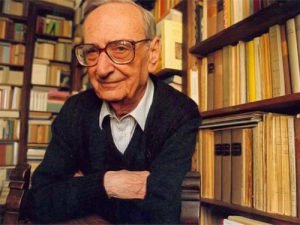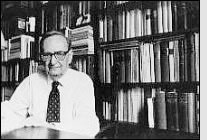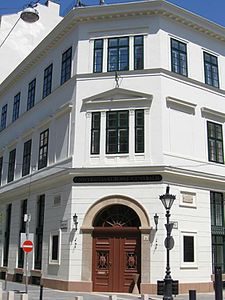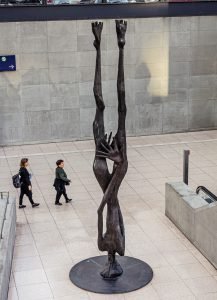More than the other Italian philosophers who were his contemporaries, Bruno deserves to be called a forerunner, if not a founder, of modern science and philosophy.” Collier’s Encyclopedia
Giordano Bruno
Although there are no science books, no documentaries or feature films about Father Giordano Bruno, this Renaissance philosopher, astronomer, mathematician, priest and mystic was one of the most important thinkers and prime movers of our modern age. Bruno was the first human being to correctly describe the basic structure, size, composition and potential of the universe. The stars were suns, by god!
Bruno was making arguments about the existence of other star systems and inhabited extra-terrestrial worlds when his proto-scientific “one-world” contemporaries were arguing about whether the earth or the sun was the center of the universe. While Bruno affirmed the heliocentric theory advanced by Copericus a generation before, Bruno’s own cosmology took this idea to it’s logical conclusion. For Copernicus, Galileo, Tycho and Kepler, the universe was limited to one sun and one world (Earth). Everything else — the moon, the stars, and planets — were part of a “celestial sphere” that circumscribed the Earth or Sun. The stars were not thought by them to be suns, nor the planets independent worlds but, rather, little heavenly lights that moved around the Earth or Sun in various ways. It was only later in life that Galileo, aided by his telescope, came to believe that the planets were, themselves, worlds. Bruno had been saying this, and much more, decades earlier without anyone taking him seriously, except for maybe the Catholic Church which burned him at the stake for it, among other things.
The Modern Universe Bruno perceived quite clearly without a telescope that the universe was much more than just the Sun and the Earth and a bunch of “stars.” For one thing, he could comprehend no end to the universe, for he, like Nicholas of Cusa before him, believed that the universe was in fact infinite in size (how could it be otherwise?), not primarily or just a place where man acts out his moral and spiritual life before the “Divine.”
Bruno’s cosmic revelations were induced not so much by pure abstract reasoning as from objective physical observation. The stars shine. The stars twinkle, and, if you take away the twinkle they appear to be round in shape. Well, (guess what?) this is because they are Suns, not just little points of light that go twinkle in the night. Big fat eureka! As for the planets, these were worlds unto themselves, not just “wandering stars.” Pretty wild stuff!
Complementing his observation that the stars shine and look like suns that are very far away, Bruno reasoned that since the universe (God) is infinite, the stars should be very far away, indeed. This would account for the stars appearing so small (alas!), for it was a known fact that objects appear smaller and smaller the farther away they are.
This simple idea led him to the watershed which is our modern view of the universe, for Bruno’s observations about the universe remain true or intuitively valid to this day. Only now was it logical to conclude that the stars will have planets (Worlds!) revolving around them, just like here! Not only this but some of these planets will have all manner of life on them, including intelligent life! For why would God create so many worlds and not populate them? It was inconceivable to Bruno that human beings could be the only mortal intelligence in such a universe.
For Bruno, the question of who or what was the center of the universe was moot, for in an infinite universe, the center had to be both everywhere and nowhere. Thus, the center of the universe was wherever the observer happened to be, which meant that our perception of the universe is relative. This very advanced idea, this predisposition toward and emphasis of the objective analysis of nature and of man as a subjective percipient of nature was one Bruno’s most important and enduring notions, one that bears itself out today in Einstein’s own relativism.
The Wandering Life
Soon after being ordained a Catholic priest in 1572, the young Bruno was suspected of heresy due to his unorthodox attitudes, and was sent back to the Dominican convent in Naples where he had begun his theological studies as a teenager. While there he continued to read and freely discuss forbidden works and ideas, such as those of the infidel Erasmus and those attributed to the mysterious Egyptian sage Hermes Trismagistus, much of which seemed to contravene the divinity of Christ. For this reason, Bruno was probably the most widely read man of his generation. In January 1576, a trial for heresy was prepared against him, but rather than face the uncertain consequences, he fled to Rome. A second excommunication process was started, and in April 1576 he abandoned the Dominican Order and began a wandering life.
The Catholic Church excommunicated Bruno, so he converted to Calvanism. After publishing a broadsheet critical of a certain Calvanist professor, Bruno was arrested and excommunicated again, by the Calvanists. After a long rehabilitation and retraction, he was allowed to leave Geneva. He then moved to France where he found favor and tolerance from the King of Navarre, heir apparent to the throne of France. He soon became a lecteur royaux.
Several years later he moved to London where he stayed as a guest for more than two years (27 months) of the French Ambassador in London. But after criticizing the pedantic aristotelian views of the professors at Oxford, regaling them with the brilliant Copernican theory and proof, he was run out of town and soon enough out of England altogether.
Bruno moved to Germany and became a Lutheran. But again he was critical of certain Lutheran doctrines and he was promptly excommunicated a third time, by the Lutherans. The world of 16th century Europe just wasn’t ready for the free thinking Bruno.
Although Bruno’s ideas and observations were laughed off as wild and unprovable by Galileo (1564-1642) and the rest of educated europe, the Catholic Church was not laughing. Fifty years earlier, Copernicus had kept a very low profile for his heliocentric (sun-centered) theory of the cosmos, never publishing his “De Revolutionibus” for fear of reprisals from the thought-controlling Church. Bruno, on the other hand, was a loose canon, as he affirmed, publically, loudly, the system of planets advanced by Copernicus. Bruno’s cosmic and philosophical notions were not only entertaining to the aristocracies of Europe in a strangely fascinating way, but they offered a philosophical wedge between themselves and the long, draconian arm of the Church.
The Shakespeare Connection
Another who may have been intrigued by Bruno’s ideas was William Shakespeare. Scholars such as Frances Yates note that Shakespeare’s “Love’s Labor’s Lost” was an echo of Bruno’s notions of romantic love, a relatively new and socially dangerous idea at the time. It is pointed out that Berowne’s great speech on love was based on Bruno’s “Spaccio della bestia trionfante” in which the gods speak in praise of love. The fact that the setting of the play is the French Court of the King of Navarre is seen as substantial evidence of this Berowne-Bruno connection.
“The themes, characters, and situtions of (Bruno’s) Il candelaio are most diversified, and, according to Spampanato, the work had a significant influence upon such writers as Moliere and Shakespeare … Bruno’s biographer also argues that such Shakespearean plays as Love’s Labour’s Lost, As You Like It, Cymbeline, King Lear, Macbeth, The Life and Death of King Richard II, and Hamlet “seem to remind us in some way of characters, scenes, speeches, and ideas of Il candelaio [considered one of the most brilliant and original Renaissance comedies], and of the Dialoghi metafisici e morali. — Arthur D. Imerti, editor / translator of Bruno’s The Expulsion of the Triumphant Beast (Univ. of Nebraska, Bison Books).
To this I think one could add or speculate that “Romeo and Juliet” was profoundly influenced by Bruno’s intense romantic side. The idea of intellectual love being superior to physical love was a Bruno trademark. The word Rome in Romeo refers, I think, to Italy where Bruno was from. Shakespeare may have selected the name “romeO” as a reference to brunO. Shakespeare’s name choice of “Juliet” (ju) may have alluded to Bruno’s great admiration for Jewish scholarship and wisdom, in those days an act of sacrilige by itself.
Many historians believe that “Love’s Labor’s Lost” was probably the first of Shakespeare’s plays produced for the London stage. This is no idle coincidence. Indeed, when the impressionable young Shakespeare arrived in London from his hometown of Stratton-on-Avon, Bruno had been living there for more than two years as the guest of the French Embassador to England. He was certainly the most controversial philosopher in London at the time. Bruno’s romantic philosophy and writings, which were “all the rage” in London, almost certainly inspired Shakepspeare to write his first play; it was surely not some aristocratic floozie as a certain Hollywood movie would have it.
“The truth was that the city authorities were trying to maintain medieval standards in a city that was no longer medieval in spirit. A new spirit of curiosity had developed, an intellectual ferment that made the old ideal of blind obedience almost impossible to enforce. London no longer lived in comparative isolation but was beginning to feel all the influences of Renaissance Europe. Above all, it felt the stirring of new winds from Italy.” Shakespeare of London, Marchette Chute (1957).
Although the author of this passage does not mention Bruno by name, there was no greater philosophical intellect visiting and impinging upon English society at that particular time than Giordano Bruno. Modern scholars often wonder where Shakespeare got his advanced ideas and deep insights into the human mind. Perhaps they need look, as the following suggests, no farther than Giordano Bruno, whose own ideas and philosophies were virtually hundreds of years ahead of the time. It was Man’s basic freedom and dignity that Bruno both envisioned and inspired, a freedom that was to unlock and open a door to perception for William Shakespeare. It was, as Bruno reminded his tomentors the moment before his execution, the beginning of the end of intellectual slavery, the beginning of the end of The Church’s claim of infallibility, at least in matters cosmic. The basic philosohphical tenets embodied in the American Constitution two-hundred years later, especially those concerned with certain inherent, inalienable rights and freedoms of the individual, are actually the fulfillment of Bruno’s quite heretical ideas.
An entirely new approach to the problem of Bruno and Shakespeare will have to be made. The problem goes very deep and must include the study, in relation to Bruno, of Shakespeare’s profound preoccupation with significant language, language which ‘captures the voices of the gods’ — to use one of Bruno’s marvellous expressions — as contrasted with pedantic or empty use of language. Shakespeare’s imagination is full of magic, which often seems to become a vehicle for imaginative solutions of the world’s problems. Was it not Shakespeare who created Prospero, the immortal portrait of the benevolent Magus, establishing the ideal state? How much does Shakespeare’s conception of the role of the Magus owe to Bruno’s reformulation of that role in relation to the miseries of the time?” Giordano Bruno and the Hermetic Tradition, Francis A. Yates, Univ. of Chicago Press)
A key reason Shakespeare excelled in his profession as playwright is that he was also an actor on the London stage for almost 20 years. This put him directly in touch with his audience. He knew first-hand what worked and what didn’t. He knew all the latest phrases, gossip, trends, news and events pertinent to his town and audience; indeed as a playwright he was a significant mover and interpreter of them.
“Even with the assistance given him by the old way of writing, with mechanical accenting and heavy use of rhyme, an Elizabethan actor had no easy time remembering his part. A reportory system was used and no play was given two days in succession. The actor played a different part every night and he had no opportunity to settle into a comfortable routine while the lines became second nature to him.” Shakespeare of London, Marchette Chute (1957).
Among Bruno’s talents was a prodigious memory. Indeed, he was world famous for it and for his published methods on the subject. His expertise in this field was the reason he had been summoned to the French court, and also the reason he was lured back to Italy in 1592 (to teach a nobleman these methods) where he could be arrested and tried for heresy.
How could a budding Shakespeare not have been profoundly moved by Bruno’s advanced ideas on ethics, science and the cosmos, by his brave philosophy concerning the freedom of thought and the primacy of the human intellect, by his call for the separation of philosophy and religion and for mutual toleration among the religions? Bruno’s ideas were it, in a nutshell. And they still are; in fact, we are today at the height of the Brunerian age. Bruno was the first FREE MAN. Though it doesn’t seem to know it, modern western culture has fully embraced Bruno’s ethical, philosophical and romantic legacy. It’s scientists, on the other hand, would just as soon skip him, even though he is in a very real sense the Father of the (modern) Universe, which he was the first to coherently and correctly postulate.
Science sans Magic
Because Bruno’s methods and ideas were often considered “magical” in nature, modern science finds reason to dismiss Bruno. But science had not even been fully developed yet! What scientists fail to understand is that “magic”, as it was understood in Bruno’s day, was not a Brothers Grimm or Walt Disney variety of magic. Elves and fairies had nothing to do with it! Magic was an intellectual tradition and philosophy thousands of years old, one whose principle tenet was that the mind of Man was in it’s own right a proactive engine of creative thought and discovery.
The similarities between magic and science are striking. Both assume that people can understand the universe in which they live, which is the goal of both. Both believe that nature proceeds in orderly sequences of known events, events that can be understood and thus used to produce desired outcomes. The Church objected to both procedures since it was only through the Church that Man could understand, entreat or have communion with nature and the Almighty. If man could do this on his own through independent study and investigation, then this would undercut the monopolistic political and moral authority of the Church, which, of course, was unacceptable.
The idea that nature could be understood by systematic investigation and experimentation was magic’s contribution to science, as it later evolved. Alchemy was nothing less than systematic experimentation whose goal was the production of gold from lesser metals. The fact that alchemists never found a way to transmute lead into gold does not mean that they weren’t practicing an early form of chemistry; it only means that alchemists were unable to rearrange the protons and electrons of lead to make gold. Physicists today still can’t do this.
All philosophies are either monist or dualist. Monists, like modern-day scientists, believe that the material world is the only world — hence materialists. Dualists believe in a binary universe, that there is a spiritual world in addition to the material world. The word “science” comes from an indo-european root meaning “to cut” or “to separate.” The same root led to the word “shit”, which means to separate living flesh from nonliving waste. The same root gave us “scythe” and “scissors” and “schism”, which have obvious connections to the concept of separation. “SCIENCE!” (word!) What Bruno wanted very much to do was separate religion from philosophy; ah, but The Church in Rome wasn’t having any…yet!
Bruno the Unknown
So why has science ignored the contributions of Bruno? Why is it hard (or impossible) to find more than a few perfunctory lines about Bruno in any astronomy text? Why is it nearly impossible to find a single book about one of the most fascinating characters in history in the New York Public Library, among others? Maybe it’s because Bruno arrived at his century-leaping revelations with little more than his eyes and brain (alas!).
Maybe it’s because of some unspoken scientific tenet which says that cosmological discoveries of this magnitude must be made by degrees, through painstaking and complicated technical procedures and proofs, not holistically realized by one person almost overnight! Maybe Bruno was so far ahead of his time that the world just forgot about him.
It may be okay for a civilization to marginalize and forget the source of it’s ideas and values, but the oversight has left a hole in our world so large that an advanced extra-terrestrial agency could drive a comet through it. And did!
Bruno gave us the moral and ethical right to eschew the illogical and largely arbitrary pedantry of religious authority and paved the way for the romantic age to come with his expanded concepts of love. He opened a universe to logical consideration, a universe we are still trying to catch up to. The prime-mover and heavy-lifter of a new age, the Age of Reason, it was Bruno who first coined the phrase “Libertas philosophica” (philosophical liberty). Indeed, Bruno’s ideas provided the essential intellectual and ethical ingredients for the Age of Enlightenment — or at least it’s idea — almost two-hundred years later. The eclecticism of his scholarship at the beginning of the scientific revolution laid the important groundwork for modern philosophy and the new science, it’s offspring, and greatly influenced the writings of Baruch Spinoza.
Father Bruno probably did more to advance science, our modern philosophy and notion of “objective reason” than Galileo and Copernicus combined. He was the one at the front doing the serious work for all his “outrageous” causes. And since the Church imprisoned him for eight years and burned him at the stake (unlike Galileo later, Bruno did not recant his views), Bruno must also be remembered as a martyr for modern Western civilization as we enjoy it today.
![]()
 Dal Pra e Geymonat, un vero e proprio punto di riferimento.
Dal Pra e Geymonat, un vero e proprio punto di riferimento.
 mondo della cultura è in lutto. È morto ieri pomeriggio nella sua abitazione fiorentina Eugenio Garin, uno dei padri della filosofia contemporanea, uno dei maggiori storici del pensiero e una figura di primo piano della cultura italiana del novecento. Aveva 95 anni. Il filosofo si è spento alle 14,30. Nella sua casa viveva da molti anni, solo, assistito da allievi e collaboratori. Sua moglie, Maria Soro, era infatti scomparsa nel 1998.
mondo della cultura è in lutto. È morto ieri pomeriggio nella sua abitazione fiorentina Eugenio Garin, uno dei padri della filosofia contemporanea, uno dei maggiori storici del pensiero e una figura di primo piano della cultura italiana del novecento. Aveva 95 anni. Il filosofo si è spento alle 14,30. Nella sua casa viveva da molti anni, solo, assistito da allievi e collaboratori. Sua moglie, Maria Soro, era infatti scomparsa nel 1998. Cento bocche spalancate seguono verso l’alto un arbusto intricato e nodoso strappato alla Foresta Nera, un groviglio di arti e membra culminanti in due piedi contratti verso il cielo. Cerco di analizzare l’impressione che desta in me: sofferenza, magari dolore, umiliazione impotente. Se quello è Bruno, è certamente opera di un Bellarmino, di un Santori: solo i biechi inquisitori che lo condannarono avrebbero gioito vedendo l’eretico pertinace conficcato a testa in giù nella terra, sprofondato verso l’inferno che si era meritato con le sue orribili eresie! E invece no: l’artista è un dinoccolato giovincello teutonico, Alexander Polzin ,che liquida ogni richiesta di spiegazione con una citazione da saputello:
Cento bocche spalancate seguono verso l’alto un arbusto intricato e nodoso strappato alla Foresta Nera, un groviglio di arti e membra culminanti in due piedi contratti verso il cielo. Cerco di analizzare l’impressione che desta in me: sofferenza, magari dolore, umiliazione impotente. Se quello è Bruno, è certamente opera di un Bellarmino, di un Santori: solo i biechi inquisitori che lo condannarono avrebbero gioito vedendo l’eretico pertinace conficcato a testa in giù nella terra, sprofondato verso l’inferno che si era meritato con le sue orribili eresie! E invece no: l’artista è un dinoccolato giovincello teutonico, Alexander Polzin ,che liquida ogni richiesta di spiegazione con una citazione da saputello: 
 All’appuntamento di presentazione, nella sede dell’università Parthenope (padroni di casa il rettore Gennaro Ferrara e il pro rettore Claudio Quintano), sono intervenuti la vicepreside dell’ateneo di Budapest,
All’appuntamento di presentazione, nella sede dell’università Parthenope (padroni di casa il rettore Gennaro Ferrara e il pro rettore Claudio Quintano), sono intervenuti la vicepreside dell’ateneo di Budapest,